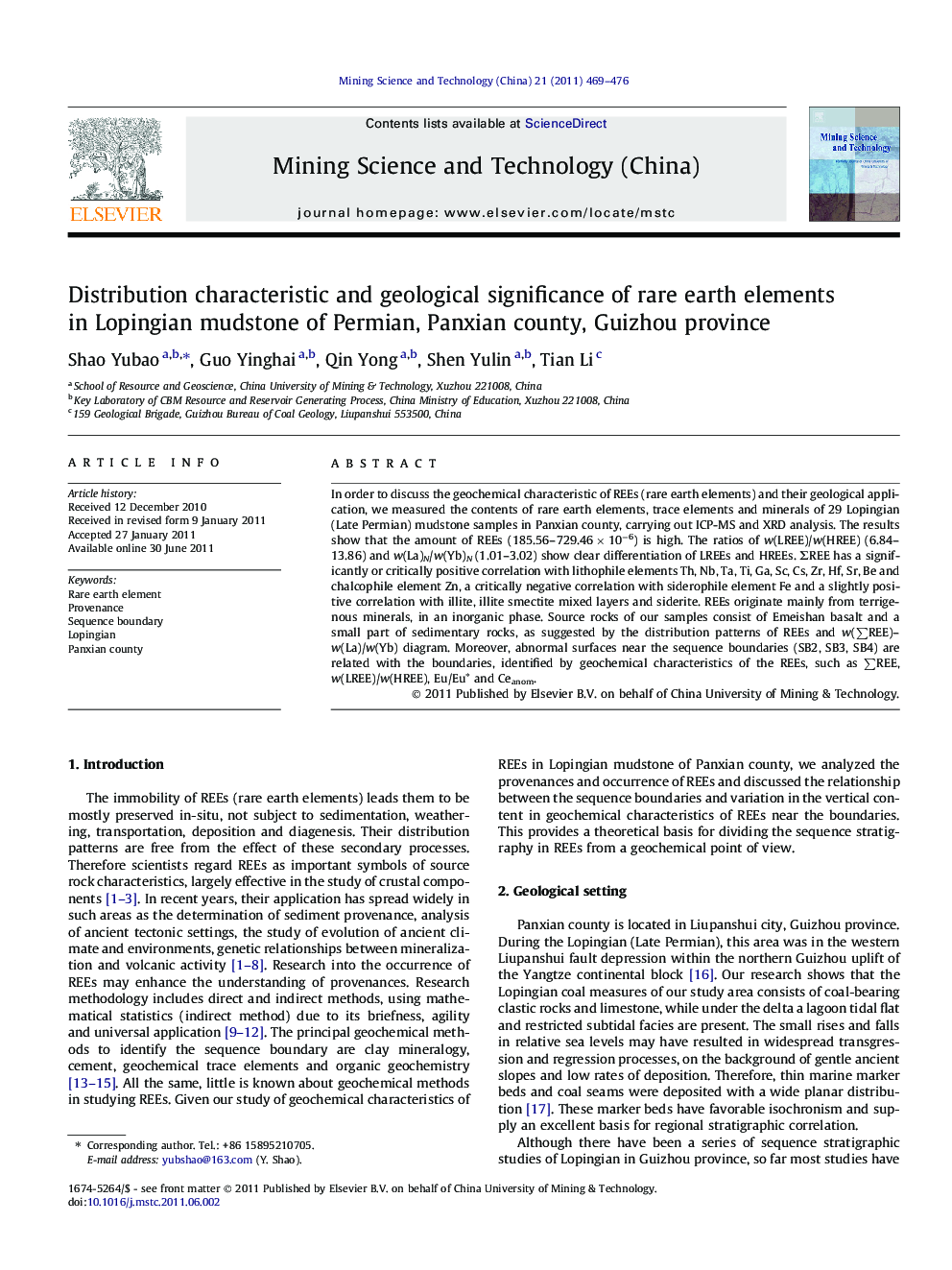| Article ID | Journal | Published Year | Pages | File Type |
|---|---|---|---|---|
| 294556 | Mining Science and Technology (China) | 2011 | 8 Pages |
In order to discuss the geochemical characteristic of REEs (rare earth elements) and their geological application, we measured the contents of rare earth elements, trace elements and minerals of 29 Lopingian (Late Permian) mudstone samples in Panxian county, carrying out ICP-MS and XRD analysis. The results show that the amount of REEs (185.56–729.46 × 10−6) is high. The ratios of w(LREE)/w(HREE) (6.84–13.86) and w(La)N/w(Yb)N (1.01–3.02) show clear differentiation of LREEs and HREEs. ΣREE has a significantly or critically positive correlation with lithophile elements Th, Nb, Ta, Ti, Ga, Sc, Cs, Zr, Hf, Sr, Be and chalcophile element Zn, a critically negative correlation with siderophile element Fe and a slightly positive correlation with illite, illite smectite mixed layers and siderite. REEs originate mainly from terrigenous minerals, in an inorganic phase. Source rocks of our samples consist of Emeishan basalt and a small part of sedimentary rocks, as suggested by the distribution patterns of REEs and w(∑REE)–w(La)/w(Yb) diagram. Moreover, abnormal surfaces near the sequence boundaries (SB2, SB3, SB4) are related with the boundaries, identified by geochemical characteristics of the REEs, such as ∑REE, w(LREE)/w(HREE), Eu/Eu∗ and Ceanom.
► We discuss the geochemical characteristic of REEs and their geological application. ► REEs originate mainly from terrigenous minerals, in an inorganic phase. ► Source rocks consist of Emeishan basalt and a small part of sedimentary rocks. ► Surface variation in the characteristics of REEs agree with sequence boundaries.
